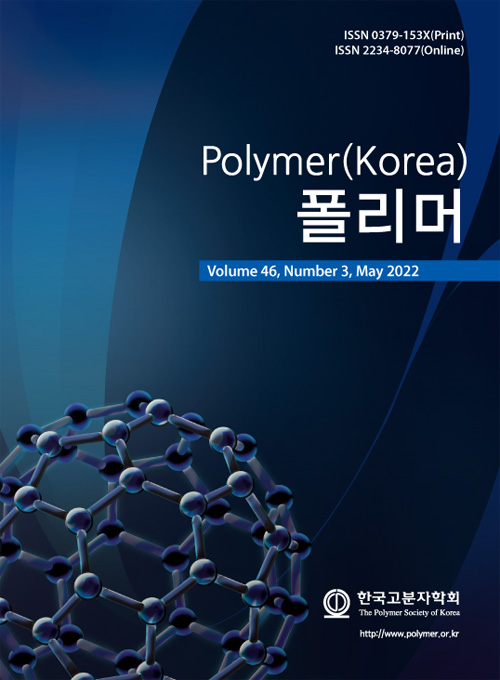- Fabrication and Characterization of Cell Spheroid Containing Porous Microparticles
Department of Nanobiomedical Science, Dankook University, Cheonan 31116, Korea
*Department of Physics, College of Science, Dankook University, Cheonan 31116, Korea- 다공성 미세입자가 포함된 세포 스페로이드의 제조 및 분석
단국대학교 나노바이오의과학과, *단국대학교 물리학과
Reproduction, stored in a retrieval system, or transmitted in any form of any part of this publication is permitted only by written permission from the Polymer Society of Korea.
Although the extensive use of cell spheroids in various fields, cellular heterogeneity by insufficient diffusion of oxygen/nutrients and accumulation of metabolic wastes remains as a challenge. Herein, we developed a cell spheroid system containing porous polycaprolactone (PCL) microparticles. The PCL microparticles with leaf-stacked structure (LSS microparticles) were fabricated using a heating-cooling technique. Cells and LSS microparticles suspension were seeded into agarose-based micro-concave array to prepare Cell/LSS microparticle (Cell/LSS) spheroids with a size of about 500 μm. On the basis of in vitro cell culture, it was recognized that the LSS microparticles uniformly distributed in Cell/LSS spheroids can be micro-channel networks for sufficient supply of medium including oxygen/nutrients and removal of metabolic wastes, and thus prevent cellular heterogeneity in spheroids. Therefore, we suggest that the Cell/LSS spheroid system may be an alternative technique to overcome the limitations of conventional cell spheroids as well as promising platform system for various studies.
본 연구에서는 다공성의 낙엽적층구조 미세입자와 세포로 구성된 세포 스페로이드 시스템을 제조하였다. 본 연구팀이 고안한, 고분자 용액의 단순 가열-냉각 과정을 통해 낙엽적층구조를 가지는 다공성 미세입자를 제조하였고, 세포와 낙엽적층구조 미세입자 혼합 용액을 아가로스 기반의 micro-concave array에 분주하여 약 500 μm의 크기를 가지는 세포/미세입자 스페로이드를 제조하였다. In vitro 세포 실험을 통해, 세포/미세입자 스페로이드 형성을 위한 최적의 비율로 세포와 미세입자가 9/1(개수비)로 혼합된 군이 선정되었으며, 스페로이드 내부에 포함된 낙엽적층구조 미세입자는 산소와 자양분을 포함한 세포 배양액의 공급 및 세포 대사물질들의 배출을 위한 micro-channel networks로의 역할을 통해 스페로이드의 불균일한 세포 구성을 억제할 수 있는, 즉 기존 세포 스페로이드의 한계를 극복할 수 있는 하나의 해결책이 될 수 있음을 확인하였다.
Keywords: cell spheroid, microparticle, tissue engineering, tissue regeneration, leaf-stacked structure.
- Polymer(Korea) 폴리머
- Frequency : Bimonthly(odd)
ISSN 0379-153X(Print)
ISSN 2234-8077(Online)
Abbr. Polym. Korea - 2023 Impact Factor : 0.4
- Indexed in SCIE
 This Article
This Article
-
2022; 46(3): 369-376
Published online May 25, 2022
- 10.7317/pk.2022.46.3.369
- Received on Jan 25, 2022
- Revised on Mar 4, 2022
- Accepted on Mar 4, 2022
 Correspondence to
Correspondence to
- Se Heang Oh
-
Department of Nanobiomedical Science, Dankook University, Cheonan 31116, Korea
- E-mail: seheangoh@dankook.ac.kr









 Copyright(c) The Polymer Society of Korea. All right reserved.
Copyright(c) The Polymer Society of Korea. All right reserved.